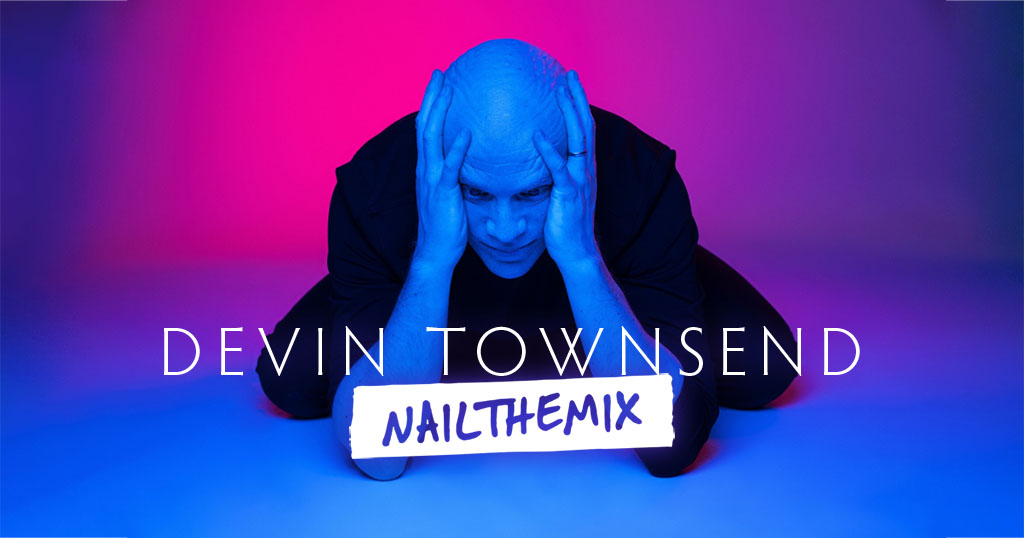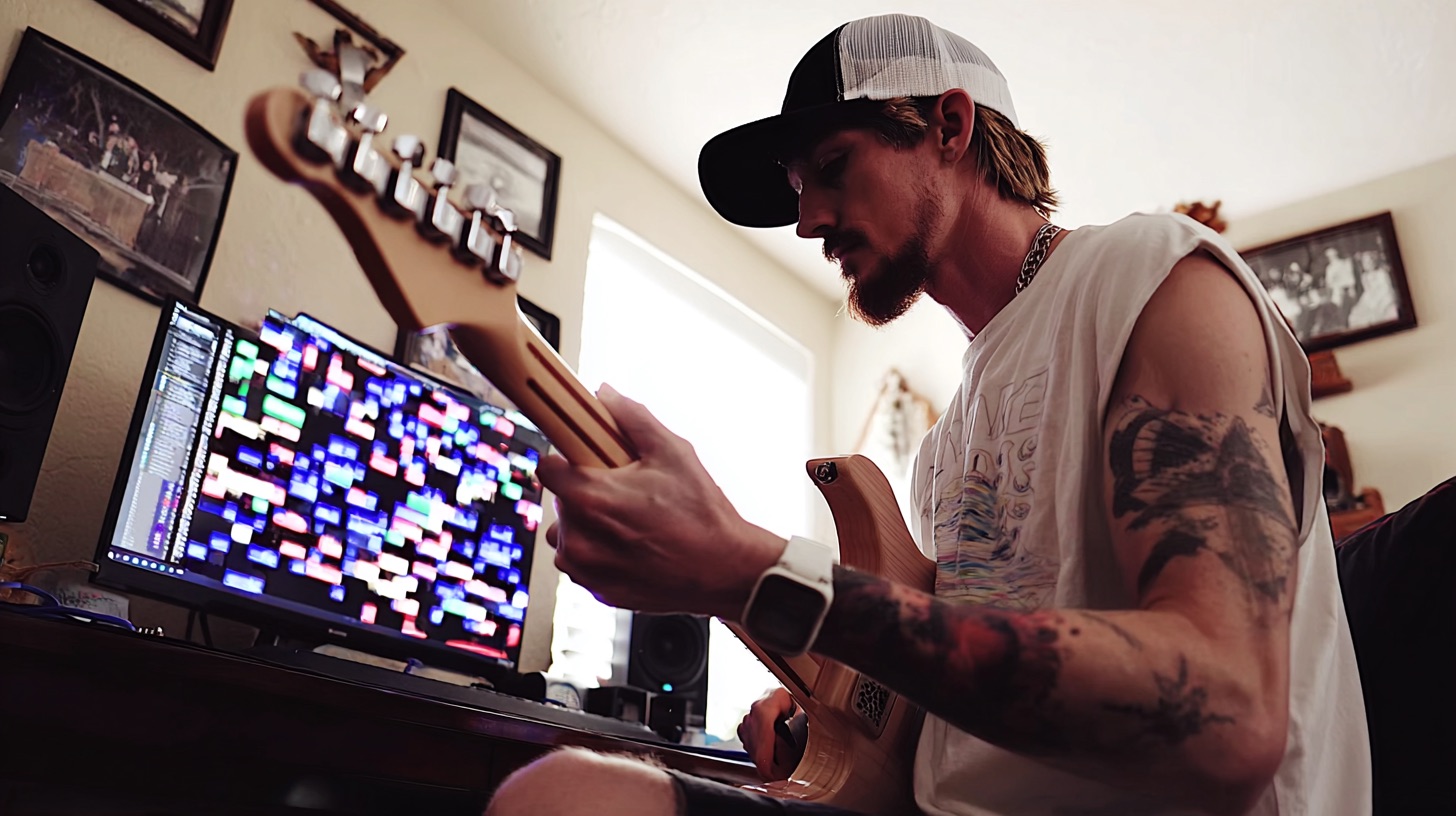
Dave Otero’s Reference Track Strategy for Mixing Archspire
Nail The Mix Staff
You know the feeling. You’ve spent hours dialing in your drums, shaping a monster bass tone, and getting your guitars to sound killer in solo. But when you pull up all the faders, the mix just doesn’t gel. It’s a mess of competing frequencies, and nothing cuts through the way it should. This is where the real art of mixing begins: balancing.
We got a front-row seat as legendary producer Dave Otero tackled this exact stage while mixing the tech-death titans Archspire. Instead of just guessing, he uses a systematic approach to A/B referencing that forces his mix to compete with the best. Here’s a breakdown of his process for making all the elements play nice together.
The Right Tool for the Job: In-Session A/B Referencing
Forget the old, clunky workflow of exporting your mix, dropping it into a new project, and trying to compare. To make quick, decisive moves, you need instant comparison. Dave’s weapon of choice for this is the Magic AB plugin.
He places it as a post-fader insert on his main mix bus. This allows him to load up to nine different reference tracks and flip between his live mix and a pro-level-mastered track with a single click. It’s a game-changer for getting an objective perspective right when you need it. While he notes there are newer, fancier (and more expensive) alternatives like some from Plugin Alliance, the core function of a solid A/B plugin is what’s essential.
Building Your Reference Playlist: Dave’s Pro Strategy
What you choose to reference is just as important as the tool you use. A random playlist won’t cut it. Dave Otero builds a very specific, strategic library of tracks for every project.
The Golden Rule: Beat Their Last Album
This is Dave’s non-negotiable starting point. He always loads a track from the band’s previous album into his A/B plugin. Why? Because his job is to deliver a product that pushes the band forward. If his new mix doesn’t sound demonstrably better than their last record, he knows he has more work to do. It’s the ultimate quality control benchmark.
The Influencers: Mixes That Got You the Gig
Next, he brings in tracks that might have influenced the band’s decision to work with him in the first place. For the Archspire session, he loaded up a song from a Cattle Decapitation album he produced. The band liked that record, so it serves as a proven sonic target and a great reference point for the kind of aggressive, clear, and powerful sound he’s known for.
The “Ballpark” References: What Fans Are Listening To
Your mix doesn’t exist in a vacuum. Fans will listen to it on playlists alongside other bands, so it has to stand up. Dave loads in references that might be stylistically different but are sonically amazing and exist in the same heavy music universe.
For this session, he pulled up an Enslaved track from their album RIITIIR (a killer Jens Bogren mix) and a track from Extol. Even though Enslaved is far more proggy than Archspire, the mix quality is top-tier. The goal isn’t to copy the sound, but to ensure that if a fan listens to Enslaved and then Archspire, the mix doesn’t sound thin, weak, or amateurish in comparison. Everything has to compete in the same arena.
Putting It to the Test: What to Listen For
With his references loaded, Dave starts flipping between his mix and the pro tracks. The first and most crucial step is to level match. The reference tracks are mastered and will be way louder than his unmastered mix. He pulls their volume down inside Magic AB to match his mix level, ensuring a fair and accurate comparison.
Instantly, he identified critical issues in his own mix:
- “Papery” Guitars: This is a classic problem. The guitars sounded scratchy and thin in the midrange, lacking the rich, wide sound of the references. This pointed directly to problem areas that needed some surgical EQ work to either boost body or cut harshness.
- Weak Low End: Compared to the references, his mix was missing weight and “fill” in the bottom frequencies. This told him he needed to re-evaluate the relationship between the kick drum and the bass guitar to build a more solid foundation.
How Referencing Inspires New Moves
A/B testing doesn’t just reveal problems; it inspires solutions. Listening to the incredible “air around the drums” on the Enslaved mix, Dave was immediately motivated to try something outside his usual playbook.
He noted that hearing the punch and space Jens Bogren achieved made him want to dive into parallel drum bus processing. Even if you’re typically averse to a certain technique, hearing its undeniable results in a reference track is the best motivation to get uncomfortable and experiment with things like parallel compression to push your sound to the next level.
By the end of the process, a few hours of focused work guided by A/B referencing got his new mix surprisingly close to his own final, released version of the track. It’s proof that a systematic, reference-based approach is one of the fastest ways to elevate your mix from a collection of good-sounding parts to a cohesive, powerful, and professional-sounding song.
Archspire on Nail The Mix
Dave Otero mixes "Remote Tumour Seeker"
Get the Session
Want to see exactly how the pros make these decisions, from EQing papery guitars to setting up complex parallel compression? At Nail The Mix, you don’t just get the theory. You get the real multitracks from bands like Archspire and watch the original producers build the mix from scratch, explaining every single move. It’s time to unlock your sound and learn the techniques that separate the pros from the hobbyists.






